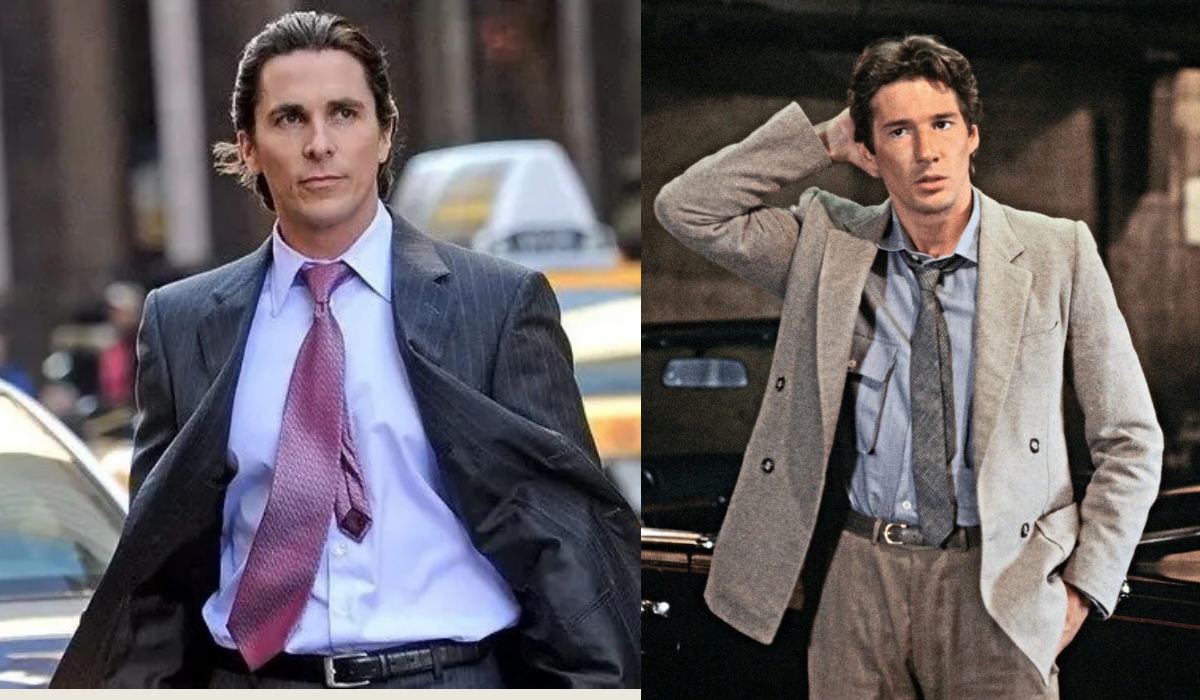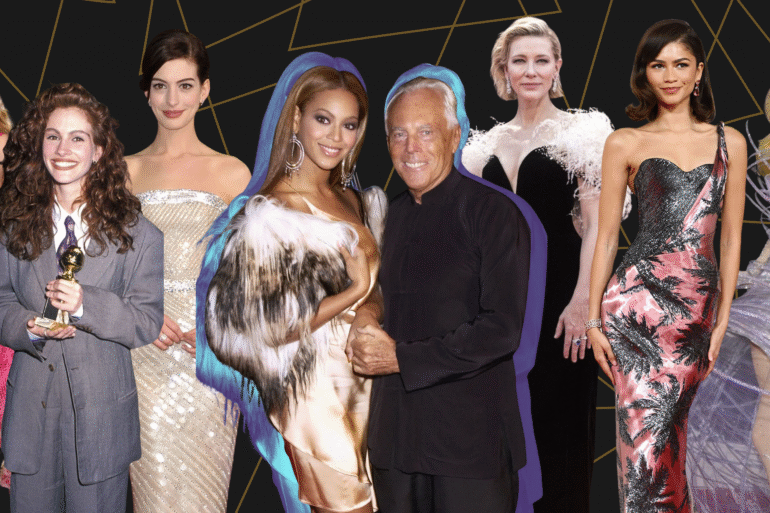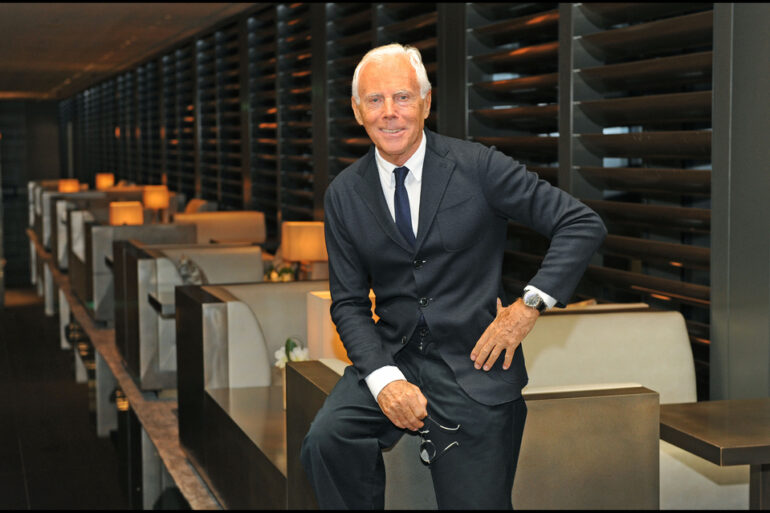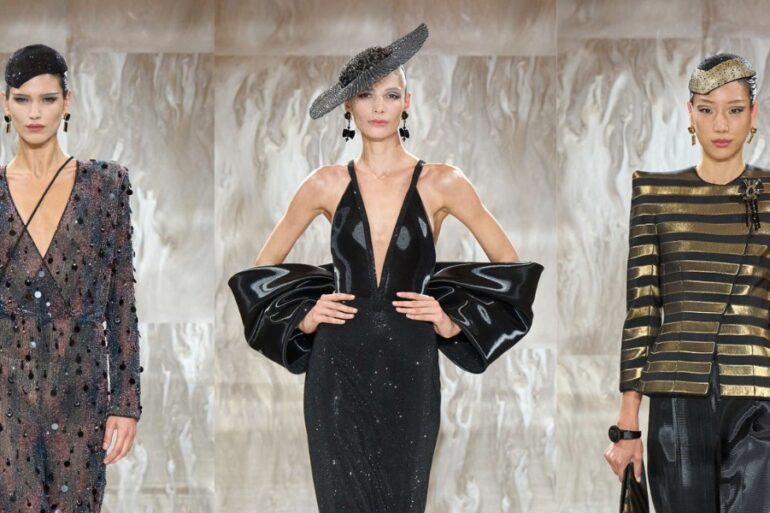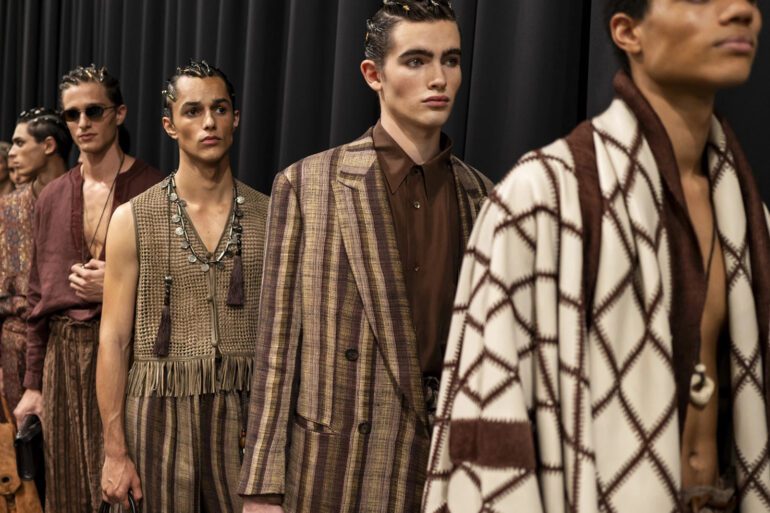Widely acknowledged as “the architect of sartorial restraint,” Giorgio Armani brought refinement to film legends.
One of cinema’s most memorable opening scenes comes from Brian de Palma’s Chicago prohibition-era film The Untouchables (1987). The overhead shot shows Al Capone (Robert De Niro) sitting in a barber’s chair, being shaved and manicured while surrounded by journalists. Giorgio Armani’s costumes for Al Capone in this and later scenes becomes part of the crime narrative: white shirt and gray pants in the opening and three-piece pinstripe suits—he looks immaculate even when he kills someone with a baseball bat.
This is 1930s Chicago where the speakeasies, corruption and crime boss Capone reign. In the second scene, one of Capone’s men leaves a bomb inside a neighborhood bar. A little girl enters to buy a soda and, seconds later, the establishment explodes.

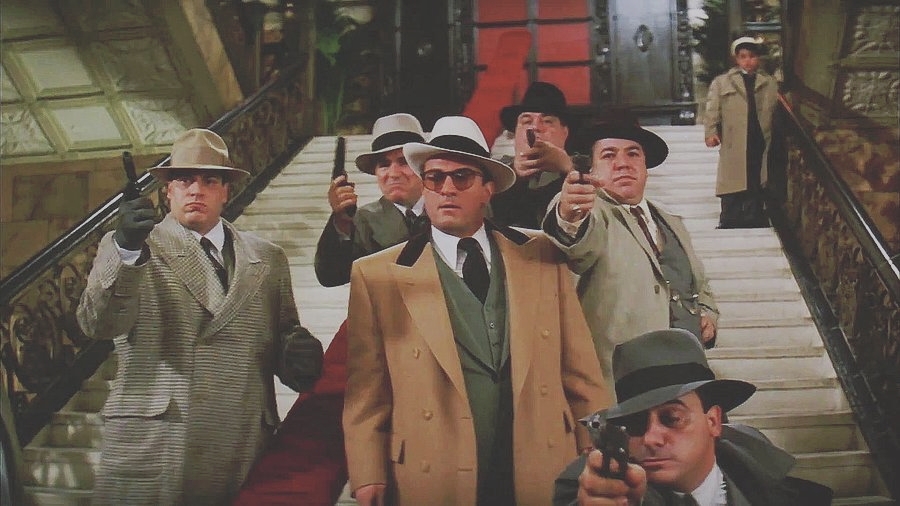
And so we are introduced to Eliot Ness, the real-life American Treasury Agent that leads a team of lawmen called “The Untouchables.” Ness and his team eventually bring Capone down—not for murders and the illegal distribution of alcohol, but for his taxes.
The opening and the train station scene with a baby stroller falling on the staircase in slow motion make it one of my favorite movies of all time. But it wouldn’t be years later that I would realize it was Giorgio Armani that outfitted the characters in the movie, his second big film after Richard Gere’s American Gigolo.
Here are three of Armani’s most memorable work in cinema.
The Untouchables
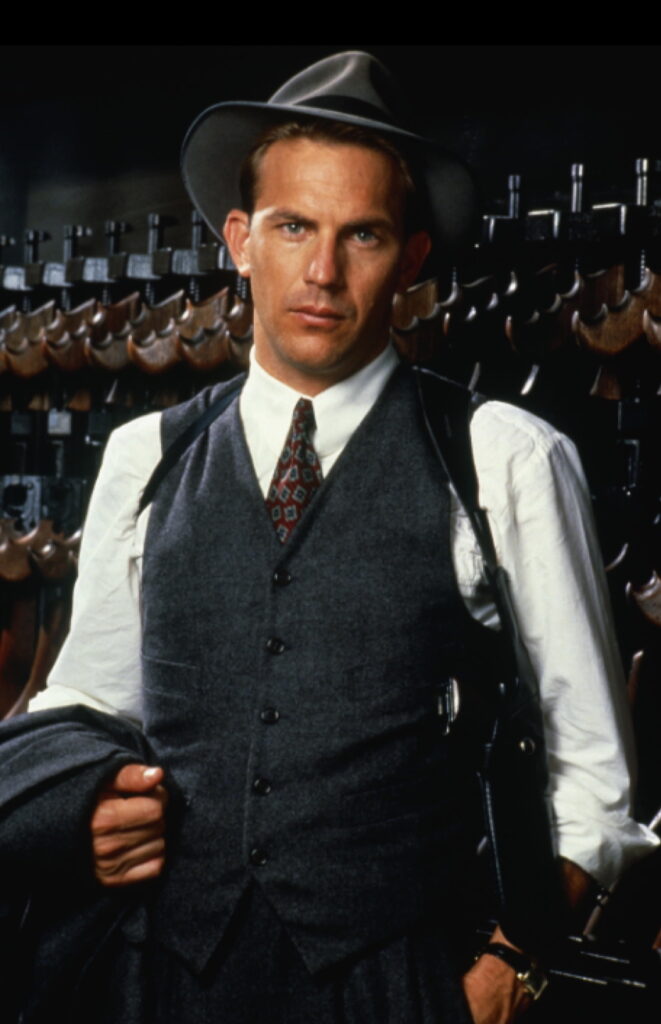
Though it came after Anna Hill Johnstone’s costume design for The Godfather (1972), Armani’s work on The Untouchables modernized the old-world tailored look and gave the gangster genre a new elegance. His soft-shouldered suits, pinstripes, and tailored coats weren’t just period replicas—they blended the 1930s with 1980s refinement.
The result is that not only did the costumes influence the feel of De Palma’s film, but also the stylized crime epics such as Bugsy and Casino, whichcame later.
He dressed Kevin Costner (Eliot Ness) in clean lines and no fuss suits to embody his integrity. As Ness’ confidence grows and his team intercepts more crimes, his suits become better fitting, darker. Armani gave Sean Connery (Jim Malone) in working-class tweed jackets, heavy wool vests, suspenders, flat caps, dark shirts. An Irish cop working the street beat, Malone is neither sleek nor polished, but grounded in grit, practicality and experience.
Malone’s entire look makes it totally believable when he tells straight-laced Ness: “You want to get Capone? Here’s how you get him: He pulls a knife, you pull a gun. He sends one of yours to the hospital, you send one of his to the morgue. That’s the Chicago way. And that’s how you get Capone.”

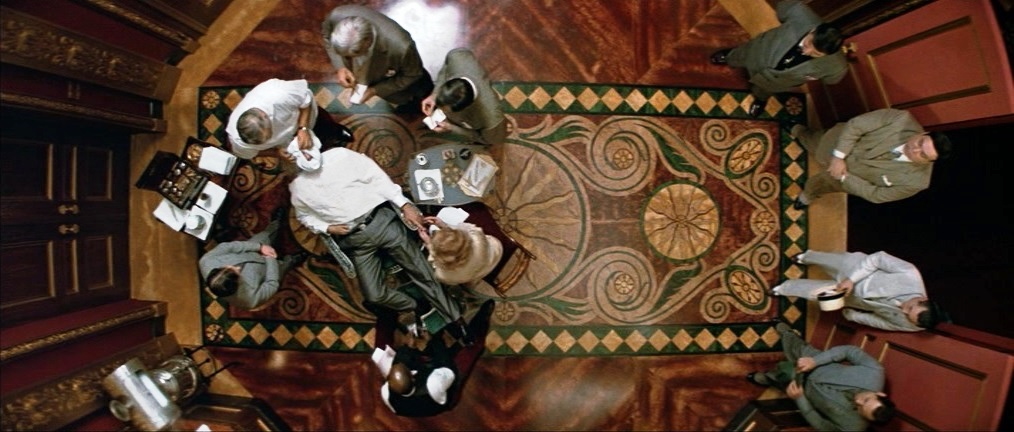
The two recruit Italian-American George Stone (Andy Garcia), a police academy trainee (because Malone insists that one rotten apple spoils the entire barrel, so get one from the source). Armani dressed Garcia in trimmer suits and jackets, narrower trousers, crisp shirts to sharpness (he’s an excellent marksman). It’s a look the suits a young and handsome Andy Garcia perfectly.
Contrasting all three and endearing himself to audiences is the accountant Oscar Wallace (Charles Martin Smith). He’s not glamorized or polished at all—instead Armani dressed him in ill-fitting suits paired with glasses and boring ties. He’s bookish, awkward with a shotgun—and he’s also the genius that figures out how to finally bring Al Capone down (taxes, taxes!).
Related story: How Giorgio Armani built an empire that changed fashion forever
Related story: Armani Privé illuminates in the grandeur of black
Related story: Emporio Armani Spring/Summer 2026 feels like a trip to the desert
American Gigolo
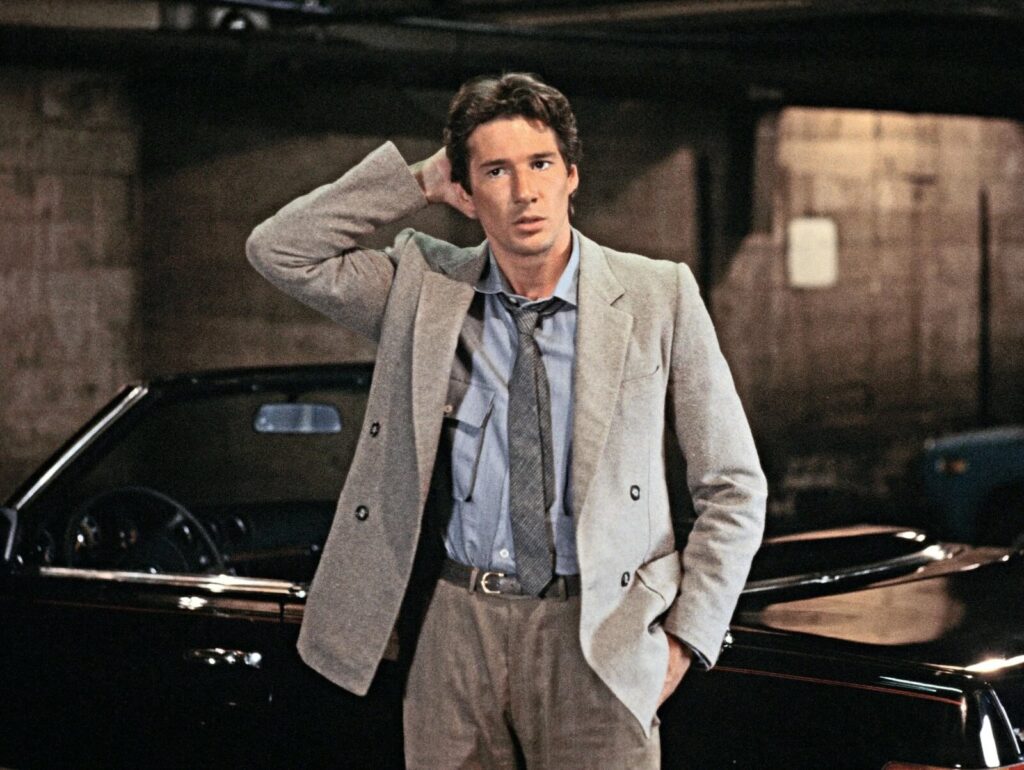
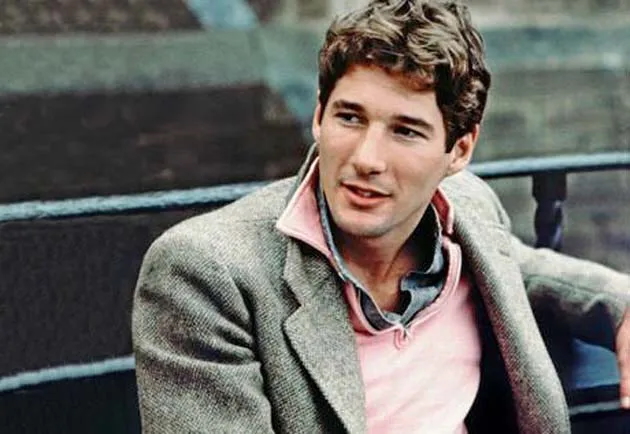
This was the film that made Giorgio Armani famous in America and the world. American Gigolo (1980), starring Richard Gere as Julian Kaye, is a neo-noir crime thriller about a high-end male escort in Los Angeles who caters to wealthy, older women, and gets tangled up in a murder.
Director Paul Schrader told British GQ in 2012, “As an actor, Richard was more interested in the character than the clothes, but to me, the clothes and the character were the same. I mean, this is a guy who does a line of coke in order to get dressed!”
In one memorable scene, Gere goes into his closet and chooses several jackets (all in muted tones), lays them on the bed, pulls out ties and shirts from his drawers, and finally chooses to go gray on gray. Now our gigolo is ready to go out in his outfit of the night.
Originally designed for John Travolta who pulled out of the film, Gere wore clothes that were “softened from the traditional 1970s suit,” which meant unstructured jackets, natural shoulders, lighter fabrics, muted tones, and luxury fabrics and relaxed drape.
American Gigolo, as many fashion magazines have noted, became a defining moment in both cinema and fashion—an aesthetic shaping the idea of “quiet luxury.”
Years later, director Schrader wanted Armani to costume another film, but his representative told him: “We don’t do films anymore. It’s too much work. We prefer to just do the red carpet!”
The Dark Knight
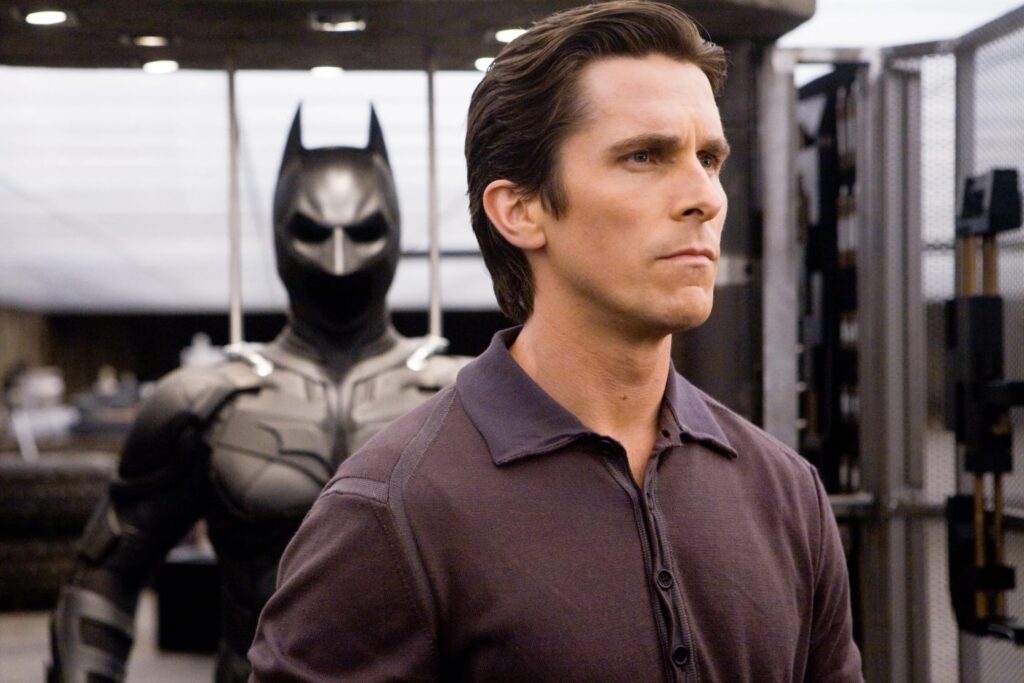
If Batman’s suits are always divisive with every iteration and every director, his alter-ego Bruce Wayne’s sartorial style is less controversial—and less noticeable. But in Christopher Nolan’s reboot, The Dark Knight (2012), Christian Bayle’s Bruce Wayne is most elegant with that easy, billionaire confidence, thanks to Armani.
In a press release for the film, Armani said, “In the design of the men’s suits for Bruce Wayne, I sought to convey his character’s sophistication and elegance. It is a privilege to contribute to a film project as exciting and as anticipated as this one.”
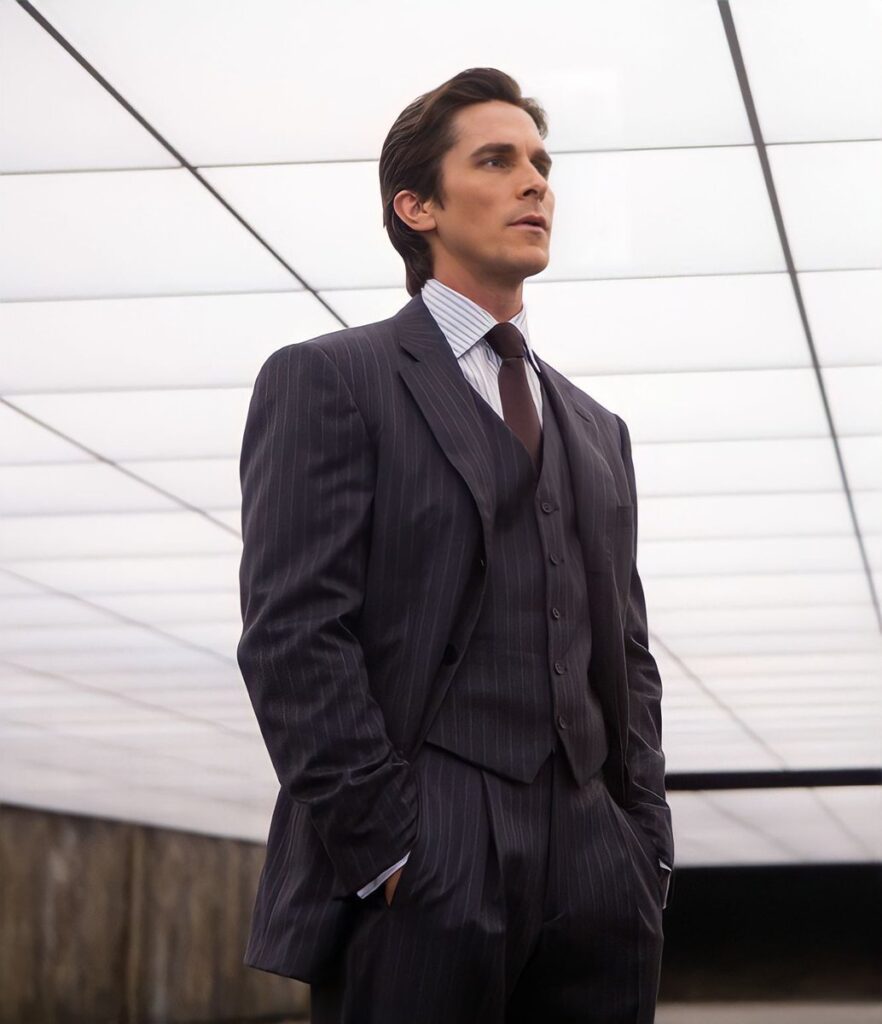
In another interview, Armani described his work in The Dark Knight as a “small role” in the film’s overall spectacle, but in reality his tailoring was crucial. Christian Bale—who, just years earlier, embodied Wall Street excess in pinstripes as Patrick Bateman in American Psycho—now appeared in Armani’s sleek, restrained suits, the very definition of quiet power and luxury that Bruce Wayne was.
For Wayne’s formal scenes, like the fundraiser for Harvey Dent, Armani dressed Bayle in a classic black tuxedo with subtle satin lapels. His power suits were slim and dark with clean shoulders and narrow lapels. And when Wayne was in his basement or in his non-suit moments (we mean both “suits”), he wore open-collared shirts and lightweight jackets.
Other films
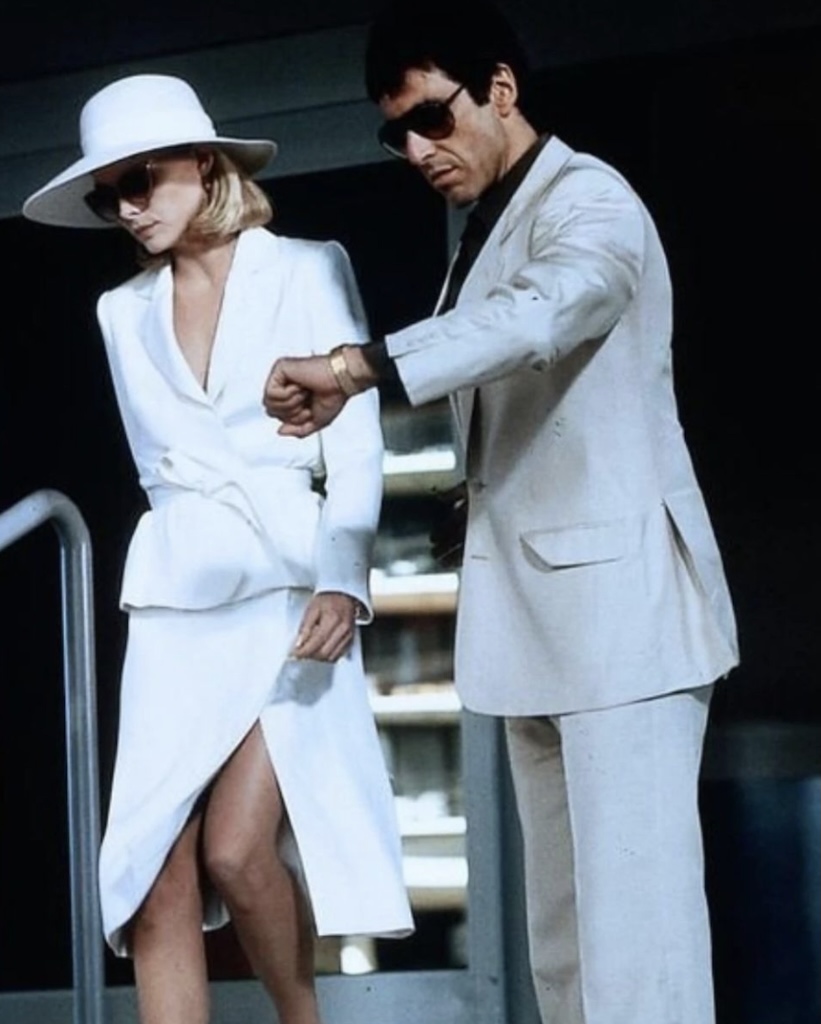
While he didn’t work on these films entirely, costume designers picked Armani suits for their characters: Leonardo de Caprio in two Armani suits in The Wolf of Wall Street (2013); Jessica Chastain’s wardrobe in A Most Violent Year (2014), in collaboration with costume designer Kasia Walicka-Maimone; George Clooney in Ocean’s Thirteen (2007); characters in Martin Scorcese’s Good Fellas (1990); Brad Pitt’s ivory dinner jacket in Inglorious Basterds (2009); and Justin Timberlake’s Sean Parker (Napster founder) in The Social Network (2010), in which the designer even created inside labels reading “Giorgio Armani for Sean Parker.” He also designed Michelle Pfeiffer‘s white suit in Scarface (1983).
Armani famously said, “Elegance is not to be noticed, but to be remembered.”
In film and in life, Armani dressed characters and people perfectly, leaving behind a legacy impossible to match or forget.
Related story: The most talked about looks at Venice Film Festival 2025
Related story: Our top red carpet picks from the 2025 Cannes Film Festival

